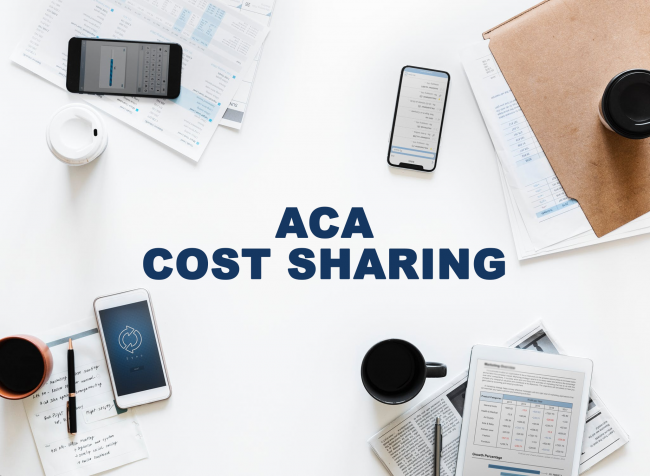Small Employers Can Reimburse for Medicare Part B, D Premiums
As the workforce ages and many employers want to keep on baby-boomer staff who have the experience and institutional knowledge that is irreplaceable, one issue that always comes up is how to handle health insurance.
Once your older workers reach the age of eligibility for Medicare, under current law you can help them pay for Part B and D premiums with a Medicare Premium Reimbursement Arrangement. These types of arrangements became legal after legislation was signed into law in 2013 to help employers provide benefits to their Medicare-eligible staff.
But the issue surfaced again recently when the Trump administration came out with new guidance for health reimbursement arrangements that paves the way for employers to set up HRAs to reimburse staff for health premiums in their personal (not company group) health plans.
Anybody who is about to turn 65 has a six-month period to sign up for basic Medicare, but if they want additional coverage they can pay for Medicare supplemental coverage such as Parts B and D.
Part B covers two types of services:
Medically necessary services: Services or supplies that are needed to diagnose or treat your medical condition and that meet accepted standards of medical practice.
Preventive services: Health care to prevent illness (like the flu) or detect it at an early stage, when treatment is most likely to work best.
Part D, meanwhile, covers prescription drug costs.
The dilemma for employers has often been whether to keep the Medicare-eligible employee on the company health plan or cut them free on Medicare.
Smaller employers – those with 20 full-time-equivalent employees – have the option to open a Medicare Premium Reimbursement Arrangement for those employees if they are coming off a group health plan and into Medicare.
For small employers, it’s legal to set up an arrangement like that, as long as doing so is at the employee’s discretion. Employers are not allowed to push an employee into a Medicare Premium Reimbursement Arrangement in order to get them off the company’s health plan.
The good news for employers is that they often can reimburse their employees in full for Part B and D, as well as Medicare Supplement, and still pay less than they would pay in group employee premiums alone.
On top of that, the employee gets a lower deductible and overall out-of-pocket experience with less, if any, premium contribution.
What you need to know
Here’s what you should know if you’re considering one of these arrangements:
A Medicare reimbursement arrangement is one where the employer reimburses some or all of Medicare part B or D premiums for employees, as long as the employer’s payment plan is integrated with the group’s health plan.
To be integrated with the group health plan:
- The employer must offer a minimum-value group health plan,
- The employee must be enrolled in Medicare Parts A and B,
- The plan must only available to employees enrolled in Medicare Parts A and B, or D, and
- The reimbursement is limited to Medicare Parts B or D, including Medigap premiums.
Note: Certain employers are subject to Medicare Secondary Payer rules that prohibit incentives to the Medicare-eligible population.
New Cost-Sharing Limits Set for ACA-Compliant Plans
The Department of Health and Human Services has released the 2020 cost-sharing limits for non-grandfathered plans that comply with the Affordable Care Act.
HHS is charged with setting the premium adjustment percentage, and it changed the formula for calculating cost-sharing limits this year. The agency says this will result in a higher maximum annual limitation on cost-sharing – and possibly higher employer shared responsibility penalties. The latter amounts have to be approved by the IRS.
The final 2020 maximum cost-sharing values are:
- $8,150 for self-only coverage, up from $7,900 this year, and
- $16,300 for other than self-only coverage, up from $15,800 this year.
Penalties
As you will know, the ACA also includes a provision called the “Employer Shared Responsibility” penalty, which is levied on applicable large employers who fail to offer coverage to a sufficient amount of their workers or fail to offer coverage that does not provide minimum value or is not affordable, as per ACA regulations.
The penalties proposed for 2020 are as follows:
- $2,570 per full-time employee (minus the first 30) for failing to offer coverage to a sufficient number of full-time employees.
- $3,860 per full time employee if the employer offers coverage to a sufficient number of full-time employees, but the coverage either doesn’t provide minimum value or is not affordable.
The latter penalty only applies to full-time employees who have received a premium tax credit for health insurance they have purchased on a government-run health insurance exchange.
Please note that these amounts have not yet been finalized. The IRS must approve the new penalty levels before they take effect.
New Rule Allows Employers to Pay Workers to Buy Their Own Health Coverage
The Trump administration has issued new rules that would allow employers to provide workers with funds in health reimbursement accounts (HRAs) that can be used to purchase health insurance on the individual market.
The rule reverses a long-standing part of the Affordable Care Act that carried hefty fines of up to $36,500 a year per employee for applicable large employers that are caught providing funds to workers so they can buy insurance.
The rule was put in place to keep employers from shunting unhealthy or older workers from their group health plans into private insurance and government-run marketplaces.
Under the rules issued by the Departments of Health and Human Services, Labor and Treasury, employers would be authorized to fund, on a pre-tax basis, health reimbursement funds that to buy ACA-compliant plans. The new rules take effect Jan. 1, 2020.
With the final rules written in a way to keep employers from trying to reduce their group benefit costs by sending sicker and older workers into the individual market, HHS noted in a press release announcing the rule that it would closely monitor employers to make sure this type of adverse selection doesn’t occur.
Typically, HRAs have only been allowed to be used to reimburse workers for out-of-pocket medical expenses. This rule allows them to also be used to pay for health insurance premiums for coverage that a worker may secure on their own.
’Integration’ conditions
The regulation permits an HRA to be “integrated” with certain qualifying individual health plan coverage. In order to be integrated with individual market coverage, the HRA must meet several conditions:
- Any individual covered by the HRA must be enrolled in health insurance coverage purchased in the individual market, and must substantiate and verify that they have such coverage;
- The employer may not offer the same class of individuals both an HRA and a “traditional group health plan”;
- The employer must offer the HRA on the same terms to all employees in a “class”;
- Employees must have the ability to opt out of receiving the HRA;
- Employers must provide a detailed notice to employees on how the HRAs work;
- Employers may not create a class of employees younger than age 25, whom they might want to keep in their group plan because they’re healthier.
- For employers with one to 100 employees, a class cannot have less than 10 employees; for employers with 100 to 200 employees, the minimum class size is 10% of the workforce; and for employers with 200 or more employees, the minimum class size is 20 employees.
While the HRA money can be used mostly for buying plans that meet ACA requirements, employers under the rule can establish a special type of “excepted benefit” HRA for employees who want to buy less expensive short-term plans that do not comply with the ACA. The contribution for such plans would be capped at $1,800 a year.
Under the ACA, employers with 50 or more full-time workers (applicable large employers) must provide their employees with health insurance that covers 10 essential minimum benefits and must be “affordable.”
Under the new rule, an applicable large employer could meet their obligation if they provide adequate HRA contributions for employees to buy individual coverage.
Founder Story
Founded by CEO Gary Becker, a health insurance and risk management consultant for more than 30 years, ScriptSourcing works with employers to rein in the costs of Rx spending through a coordinated, seamless approach involving several key programs. We have developed a system that helps employers and employers significantly mitigate Rx costs and risks without compromising benefits.
Despite Ruling That ACA Is Invalid, the Law Stands for Employers
A ruling by a U.S. District Court judge in December 2018 that the Affordable Care Act is unconstitutional is not expected to stand but, if it does, the moves that have been made in the health insurance space to reduce costs, deliver better care outcomes and make the system more efficient would be expected to stay.
For those employers that were offering health coverage to their employees before the ACA and have continued since, the marketplace dynamics would likely not change much if the ruling were not overturned on appeal.
Additionally, since there has been some success in the employer-sponsored health care space in keeping cost inflation relatively tame, there would likely be no incentive for health insurers and providers to abandon those efforts.
The more likely outcome is that a higher court (and eventually likely the U.S. Supreme Court) overturns U.S. District Judge Reed O’Connor’s ruling that because Congress eliminated the individual mandate portion of the ACA, the rest of the law is also invalid and cannot stand. That means all aspects of the law, including health care exchanges, the employer mandate, and the requirement that policies cover 10 essential benefits, and much more. The individual mandate was repealed at the end of 2017.
Several states such as Massachusetts, New York and California have since intervened to defend the law. They argue that, if Congress wanted to repeal it, it would have done so. The Congressional record makes it clear Congress was voting only to eliminate the individual mandate penalty in 2019; it indicates that they did not intend to strike down the entire ACA.
The original lawsuit against the ACA was brought by 20 attorneys general from Republican states, and now 17 attorneys general led by California’s Xavier Becerra have filed a notice of appeal with the 5th U.S. Circuit Court of Appeals in New Orleans.
Interestingly, the Trump administration filed a brief early in 2018 encouraging the court to uphold the ACA but strike down the provisions relating to guaranteed issue and community rating.
There have been more than 70 attempts to invalidate the ACA in courts across the country, and two of those cases made it to the Supreme Court. The last time the ACA was upheld was in 2012 and all five justices who voted at that time to uphold the law are still on the bench today.
Additionally, the ACA is an extremely expansive piece of legislation, which has been on the books since 2010. Legal pundits say it’s unlikely the Supreme Court would want to strike down a law that affects millions of people in the country. In fact, because of this the court may decide not even to take up the case if the 5th Circuit has overturned O’Connor’s ruling.
Employer effects
While this case is under appeal the law will stand, meaning that all parts of it, except the individual mandate, will remain. That means all employers who are considered “applicable large employers” under the ACA, will be required to continue offering health insurance to their workers.
If you are one of them, you need to continue complying with the law of the land as it stands. And remember, while Congress eliminated the penalties associated with not complying with the individual mandate, the penalties for not complying with the employer mandate are still very much in place. Fines can be severe for non-compliance.
This ruling is not expected to affect those penalties, reporting requirements, or any other applicable ACA requirement at this time.
Pharmacy Benefit Managers: A Brake on Rising Prescription Costs or a Cause of Them?
In 2017, spending on prescription drugs grew 11%, faster than any other category of health care spending, according to the U.S. Centers for Medicare and Medicaid Services.
The report cited increased use of new medicines, price increases for existing ones, and more spending on generic drugs as the reasons for this growth. Increasingly, though, observers of the health care system point to one player – the pharmacy benefit manager.
PBMs are intermediaries, acting as go-betweens for insurance companies, self-insured employers, drug manufacturers and pharmacies. They can handle prescription claims administration for insurers and employers, facilitate mail-order drug delivery, market drugs to pharmacies, and manage formularies (lists of drugs for which health plans will reimburse patients.)
A PBM typically has contracts with both insurers and pharmacies. It charges health plans fees for administering their prescription drug claims, and also negotiates the amounts that plans pay for each of the drugs.
At the same time, it creates the formularies that spell out the prices pharmacies receive for each drug on the lists. Commonly, the price the plan pays for a drug is more than the pharmacy receives for it. The PBM collects the difference between the two prices.
It can do this because the health plan does not know what the PBM’s arrangement is with the pharmacy, and vice versa. Also, a health plan does not know the details of the PBM’s arrangements with its competitors.
A PBM could charge one plan $200 for a month’s supply of an antidepressant, charge another plan $190 for the same drug, and pay the pharmacy $160. None of the three parties knows what the other parties are paying or receiving.
In addition, drug manufacturers, who recognize the influence PBM’s have over the market, offer them rebates off the prices of their products.
Questionable transparency
In theory, the PBMs pass these rebates back to the health plans, who use them to moderate premium increases. However, because these arrangements are also confidential, the extent to which these savings are passed back to health plans is unknown. Many observers believe that PBMs are keeping all or most of the rebates.
To fund the rebates, drug manufacturers may increase their prices. The CEO of drug-maker Mylan testified before Congress in 2016 that more than half the $600 priceof an anti-allergy drug used in emergencies went to intermediaries.
The PBMs argue that they help hold down drug prices by promoting the use of generic drugs and by passing on the savings from rebates to health plans and consumers.
They reject the notion that they are somehow taking advantage of health plans and pharmacies, pointing out that they are “sophisticated buyers” of their services. They also argue that revealing the details of their contracts would harm their ability to compete and keep prices low.
Nevertheless, PBMs are now attracting scrutiny from Congress, health plans and employers. At least one major insurer has sued its PBM for allegedly failing to negotiate new pricing concessions in good faith.
In addition, businesses such as Amazon are considering getting into the PBM business. Walmart is already selling vials of insulin at relatively inexpensive prices.
PBMs earn billions of dollars in profits each year. With the increased attention those profits have brought, it is uncertain how long that will continue.
Getting a Head Start on Open Enrollment
As open enrollment is right around the corner, now is the time to gear up to maximize employee enrollment, help them make the best selections for their own personal circumstances, and stay compliant with relevant laws and regulations.
It’s a lot to take in as uncertainty has been a constant during the last many years with the onset of the Affordable Care Act, and now that its future is hazy at best.
Still, since health coverage and other employee benefits are an important part of your compensation package – and your competitive edge for talent – it’s important that you get it right.
Here are some pointers to make open enrollment fruitful for your staff and your organization.
Review what you did last year
Review the results of the previous year’s open enrollment efforts to make sure the process and the perks remain relevant and useful to workers. How effective were various approaches and communication channels, and did people give any feedback about the process itself?
Start early with notifications
You should give your employees notice at least a month before open enrollment to let them know it’s coming, as well as provide them with information on the various plans you are offering. Encourage them to read the information and come to your human resources point person with questions.
Help them sort through plans
You should be able to help them figure out which plan features fit their needs, and how much the plans will cost them out of their paycheck. Use technology to your advantage, particularly any registration portal that your plan provider offers. Provide a single landing page for all enrollment applications.
That said, you should hold meetings on the plans and also put notices in your employees’ paycheck envelopes.
Plan materials
Communicate to your staff any changes to a health plan’s benefits for the 2019 plan year through an updated summary plan description or a summary of material modifications.
Confirm that their open enrollment materials contain certain required participant notices, when applicable – such as the summary of benefits and coverage.
Check grandfathered status
A grandfathered plan is one that was in existence when the ACA was enacted on March 23, 2010 and is thus exempt from some of the law’s requirements. If you make certain changes to your plan that go beyond permitted guidelines, the plan is no longer grandfathered.
If you have a grandfathered plan, talk to us to confirm whether it will maintain its grandfathered status for the 2019 plan year. If it is, you must notify your employees of the plan status. If it’s not, you need to confirm with us that your plan comports with the ACA in terms of benefits offered.
ACA affordability standard
Under the ACA’s employer shared responsibility rules, applicable large employers must offer “affordable” plans, based on a percentage of the employee’s household income. For plan years that begin on or after Jan. 1, 2019, the affordability percentage is 9.86% of household income. At least one of your plans must meet this threshold.
Out-of-pocket maximum
The ACA’s out-of-pocket maximum applies to all non-grandfathered group health plans. The limit for 2019 plans is $7,900 for self-only coverage and $15,800 for family coverage.
Make sure your plan is in line with these figures.
Other notices
Consider also including the following notices:
- Initial COBRA notice
- HIPAA notice. This may be included in the plan’s summary plan description
- Notice of HIPAA special enrollment rights
- HIPAA privacy notice
- Summary plan description
- Medicare Part D notices
Get spouses involved
Benefits enrollment is a family affair, so getting spouses involved is critical. You should encourage your employees to share the health plan information with their spouses so they can make informed decisions on their health insurance together.
Also, encourage any spouses who have questions to schedule an appointment to get questions answered.








